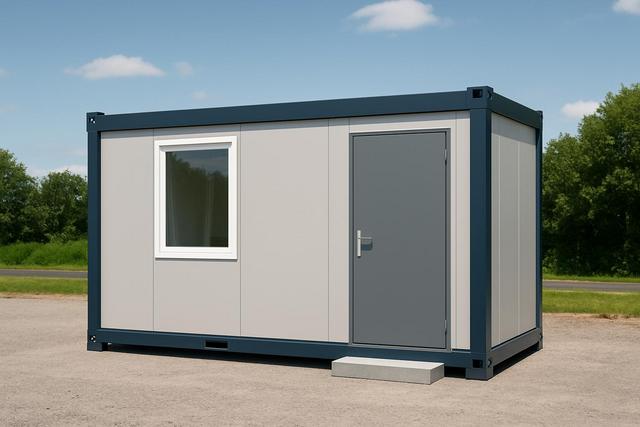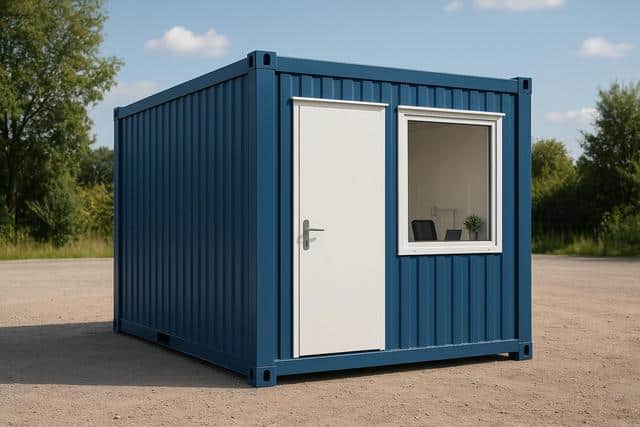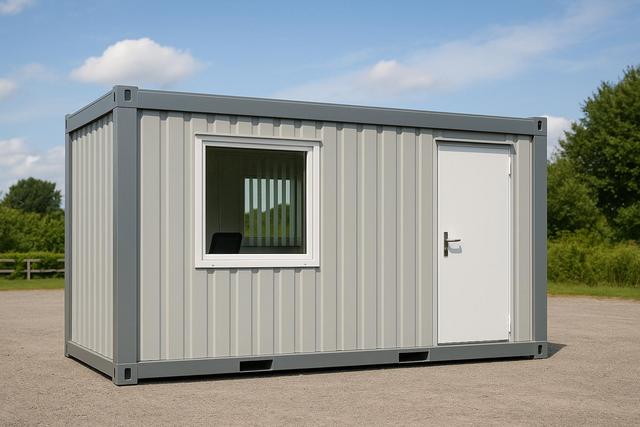
Home Solar Panels in the U.S. (2025): Costs, Incentives, and Payback Explained
At‑a‑Glance: 2025 Home Solar Landscape
Rooftop solar in 2025 is characterized by historically low quoted installation costs, a still‑generous federal tax credit for both solar and standalone batteries, and retail electricity prices that have continued to tick upward in many regions. Together, these factors are keeping payback timelines appealing in much of the country, even as local policies (like net billing in California) reshape how export credits are calculated. The sections below walk through today’s incentives, price benchmarks, and a simple, transparent way to estimate your own payback window without hype or hard sells.
Federal Incentives You Can Use in 2025
The current federal Residential Clean Energy Credit provides a 30% tax credit on qualified costs for solar, battery storage (3 kWh+), and other eligible clean‑energy systems placed in service from 2022 through 2032. It phases down to 26% in 2033 and 22% in 2034. See official guidance and how to claim it on your return via Form 5695 here [1] and here [2]. ([irs.gov](https://www.irs.gov/credits-deductions/residential-clean-energy-credit?utm_source=openai))
Key details homeowners often overlook: the credit is nonrefundable (unused amounts can carry forward); labor, wiring, and interconnection costs can qualify; and battery storage became eligible starting in tax year 2023. Always confirm eligibility and recordkeeping requirements before filing. [3]. ([irs.gov](https://www.irs.gov/credits-deductions/how-to-claim-a-residential-clean-energy-tax-credit?utm_source=openai))
How Much Does Home Solar Cost in 2025?
Marketplace data through the first half of 2025 show median quoted prices around $2.48 per watt (W) for residential systems—tying late‑2024’s record lows—according to EnergySage’s biannual industry report [4]. A separate trade report summarized the H1 2025 findings: a typical 11.7 kW system quote was about $29,016 before incentives [5]. ([energysage.com](https://www.energysage.com/press/energysage-marketplace-intel-report-21/?utm_source=openai))
To make those figures tangible, here’s a simple snapshot using today’s median quotes and the federal 30% credit.
| System Size | Indicative Pre‑Incentive Cost (at ~$2.48/W) | Estimated Federal Credit (30%) | Approx. Net Cost After Credit |
|---|---|---|---|
| 6 kW | $14,880 | $4,464 | $10,416 |
| 10 kW | $24,800 | $7,440 | $17,360 |
| 12 kW | $29,760 | $8,928 | $20,832 |
Notes: System sizes and quotes vary by region, roof complexity, equipment choices, and installer labor. Always compare multiple quotes to get a clear picture of current pricing in your area. EnergySage consistently reports record‑low median quotes through late‑2024 and into 2025 [6]. ([energysage.com](https://www.energysage.com/press/energysage-marketplace-intel-report-20/?utm_source=openai))
Expert perspective: “Heading into 2025, solar and battery prices had never been lower on the EnergySage Marketplace,” said Emily Walker, EnergySage. [7]. ([solarpowerworldonline.com](https://www.solarpowerworldonline.com/2025/04/residential-solar-and-storage-prices-hit-all-time-low-in-2024/?utm_source=openai))
Electricity Prices and What They Mean for Payback
Retail electricity prices matter because they set the value of each kilowatt‑hour (kWh) you offset. The U.S. Energy Information Administration (EIA) currently forecasts average residential prices around 17 cents/kWh nationwide in 2025, up from 2024 [8]. Utility‑level data show wide state‑by‑state variation—for example, EIA’s Electric Power Monthly tables detail how monthly residential rates differ across the U.S. [9]. ([eia.gov](https://www.eia.gov/outlooks/steo/report/elec_coal_renew.php?utm_source=openai))
Wholesale power trends also shape future bills. EIA’s outlook expects most regions to see slightly higher wholesale prices in 2025 (with ERCOT/Texas and the Pacific Northwest as notable exceptions), driven partly by fuel costs and surging data‑center demand [10] and [11]. ([publicpower.org](https://www.publicpower.org/periodical/article/eia-forecasts-slightly-higher-wholesale-power-prices-most-us-2025?utm_source=openai))
Estimated payback, in practice: suppose you’re quoted $29,000 for an 11.7 kW system (about the current median), and you claim the 30% federal credit for a net of roughly $20,300. Using NREL’s PVWatts to estimate production, an 11.7 kW array might generate roughly 13,000–18,000 kWh annually depending on location and shading. Valued at a representative 17 ¢/kWh, that’s about $2,200–$3,100 in first‑year bill reductions—yielding a simple payback roughly in the 7–10 year range, before any state incentives. Your range will vary with your roof, local rates, export credit rules, and consumption profile. Try PVWatts for a site‑specific output estimate [12]. ([pvwatts.nrel.gov](https://pvwatts.nrel.gov/version_5.php?utm_source=openai))
Net Metering vs. Net Billing: Why It Matters
Many states now compensate exported solar differently than in past net‑metering regimes. For example, in California, systems interconnected on or after April 15, 2023 are on a Net Billing Tariff (sometimes called the Solar Billing Plan), which pays exports largely at time‑of‑use or avoided‑cost‑based rates, not full retail. That increases the value of daytime self‑consumption and can make right‑sizing your array and considering storage more attractive. Read the California Public Utilities Commission’s overview here [13]. ([cpuc.ca.gov](https://www.cpuc.ca.gov/NEM/?utm_source=openai))
State and Local Incentives (Finding What Applies to You)
Beyond the federal credit, rebates and performance‑based incentives are highly local. The Database of State Incentives for Renewables & Efficiency (DSIRE) remains the most widely cited clearinghouse to look up current programs by ZIP code or state. Start here to scan policies and rebates for your address [14]. ([dsireusa.org](https://www.dsireusa.org//?utm_source=openai))
Pro Tip: If your utility offers time‑of‑use rates, program your major loads (EV charging, water heating, laundry) to maximize daytime self‑consumption. Under net billing, reducing exports during low‑value hours can improve your payback without oversizing your system.
Solar + Storage: When Does a Battery Pencil Out?
Standalone batteries became eligible for the 30% federal credit in 2023—useful where outages are common or where tariff structures reward peak shaving. The economics hinge on your utility’s rates and export credits: if your export rate is low but your peak rate is high, a modest battery can improve self‑consumption and resilience. Confirm eligibility details via the IRS guidance and Form 5695 instructions [1] and [2]. Marketplace data indicate storage prices rose modestly in early 2025, though equipment integration (for example, all‑in‑one inverter‑battery units) is helping many installers keep turnkey quotes competitive [4]. ([irs.gov](https://www.irs.gov/credits-deductions/residential-clean-energy-credit?utm_source=openai))
Financing Choices: Cash, Loans, or Third‑Party
Cash purchases typically yield the strongest lifetime savings because you avoid interest charges and keep all incentives. Secured or unsecured loans can reduce upfront costs; compare APRs, fees, and any dealer‑fee adders to ensure the payment fits your budget. Third‑party options (leases/PPAs) can lower entry costs and shift some maintenance duties to the provider, but you generally forgo the federal credit and some upside. Whichever you choose, request all‑in quotes that break out equipment, labor, interconnection, and any adders, and ask for a production estimate based on your roof geometry—not a generic “average.”
DIY Payback Calculator: A Quick, Reliable Method
Use this three‑step approach for a grounded estimate:
1) Production: Run your address in PVWatts to get annual kWh and a realistic range based on weather variability [12]. 2) Value per kWh: Look up your state’s historical/seasonal rates and current plan details from recent bills; for a national baseline, EIA’s latest outlook pegs 2025 retail residential prices near 17 ¢/kWh [8], while monthly data by state are tracked in EIA’s Electric Power Monthly [9]. 3) Upfront vs. net cost: Apply the 30% federal credit (and any state/utility rebates) to your quotes; use the lower of your production range to be conservative. ([pvwatts.nrel.gov](https://pvwatts.nrel.gov/version_5.php?utm_source=openai))
Optional sanity checks: translate your array’s annual kWh into familiar equivalents (for example, EPA’s Green Power calculator provides context) to make sure the magnitude feels right for your home [15]. ([epa.gov](https://www.epa.gov/green-power-markets/green-power-equivalency-calculator-calculations-and-references?utm_source=openai))
Regional Nuances Worth Watching in 2025
• Rate design shifts: Some utilities are rolling out time‑of‑use or demand‑based rates for new solar customers, which can change savings patterns even if your average ¢/kWh stays similar. • Wholesale‑to‑retail lag: Changes in wholesale prices can take time to flow through to retail bills—a dynamic EIA notes in its outlook coverage [10]. • Policy updates: Net billing and community solar rules continue to evolve—check DSIRE before you sign a contract [14]. ([publicpower.org](https://www.publicpower.org/periodical/article/eia-forecasts-slightly-higher-wholesale-power-prices-most-us-2025?utm_source=openai))
FAQs
Frequently Asked Questions
How soon does the 30% tax credit end?
The 30% rate applies to systems placed in service through December 31, 2032; it steps down to 26% in 2033 and 22% in 2034 under current law [1]. ([irs.gov](https://www.irs.gov/credits-deductions/residential-clean-energy-credit?utm_source=openai))
Can I claim the credit if I finance my system?
Financing alone doesn’t disqualify you. If you own the system and meet eligibility rules, you generally claim via Form 5695 for the tax year the system is placed in service [2] and [3]. ([irs.gov](https://www.irs.gov/instructions/i5695?utm_source=openai))
What if my bills are already low—does solar still make sense?
Lower utility rates and low annual consumption both lengthen payback. Check your actual ¢/kWh and usage (kWh/year), then run a PVWatts estimate. Many homeowners with below‑average rates still install solar for predictability and resilience, but the financial case varies widely by location [9] and [12]. ([eia.gov](https://www.eia.gov/electricity/monthly/epm_table_grapher.php?ad=semD&locale=en_US&t=epmt_5_6_a&tt=rmd&utm_source=openai))
How do California’s rules affect savings?
Under the Net Billing Tariff, export credits are typically lower than retail rates and vary by time of day, so self‑consumption and right‑sizing often drive stronger economics; see the CPUC’s overview [13]. ([cpuc.ca.gov](https://www.cpuc.ca.gov/NEM/?utm_source=openai))
Next Steps: Compare Quotes and Plan Your Project
Ready to see numbers for your roof? Start with a quick production estimate using NREL PVWatts, then compare turnkey quotes from multiple vetted installers. A neutral way to begin is to review marketplace intelligence and request quotes through reputable platforms [4]. For incentives, check DSIRE to confirm state and utility programs before you decide [14]. ([energysage.com](https://www.energysage.com/press/energysage-marketplace-intel-report-21/?utm_source=openai))
Local installer search widget (enter ZIP code): ZIP ________ | Preferred install month: ________
Online quote widget (request multiple offers): Use a trusted marketplace to compare equipment, warranties, and financing side by side [4]. Always verify license and insurance, and avoid high‑pressure sales tactics.
Recap: With median quotes near multi‑year lows, a 30% federal credit still in place, and electricity prices that continue to reward self‑consumption, 2025 remains a practical time to evaluate home solar. Take an hour to run a production estimate, gather at least three quotes, and review your rate plan—small steps that can clarify your savings outlook for years to come.
Websources
[1] IRS — Residential Clean Energy Credit
[2] IRS — Instructions for Form 5695
[3] IRS — How to claim a residential clean energy tax credit
[4] EnergySage — Solar & Storage Marketplace Report (H1 2025)
[5] pv magazine USA — Record‑low ~$29k median system (H1 2025)
[6] EnergySage — Marketplace Report (H2 2024)
[7] Solar Power World — Prices hit all‑time low in 2024
[8] EIA — Short‑Term Energy Outlook (Electricity)
[9] EIA — Electric Power Monthly (Table 5.6.A)
[10] American Public Power Association — EIA forecasts 2025 wholesale prices
[11] Reuters — EIA sees higher U.S. wholesale power prices in 2025
[12] NREL — PVWatts Calculator
[13] CPUC — Net Energy Metering and Net Billing


